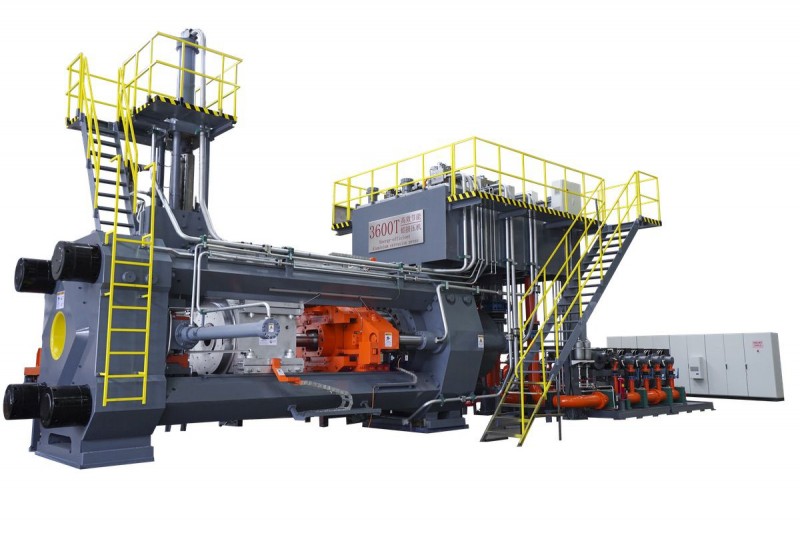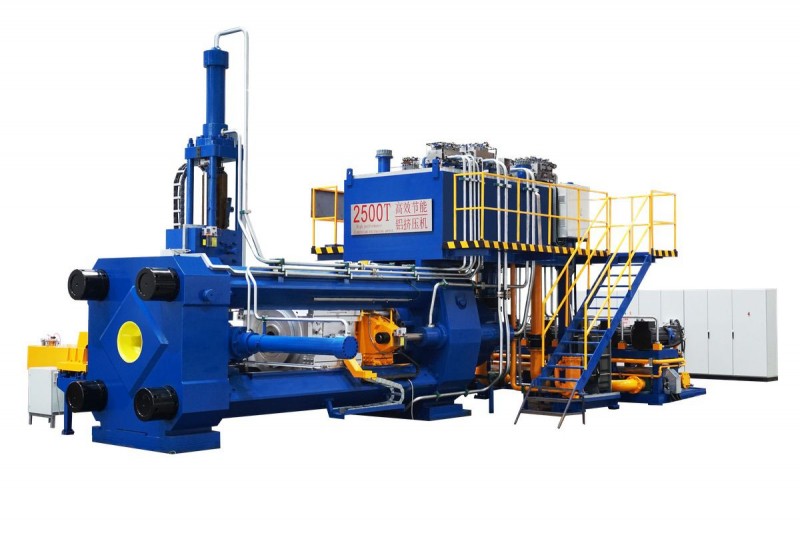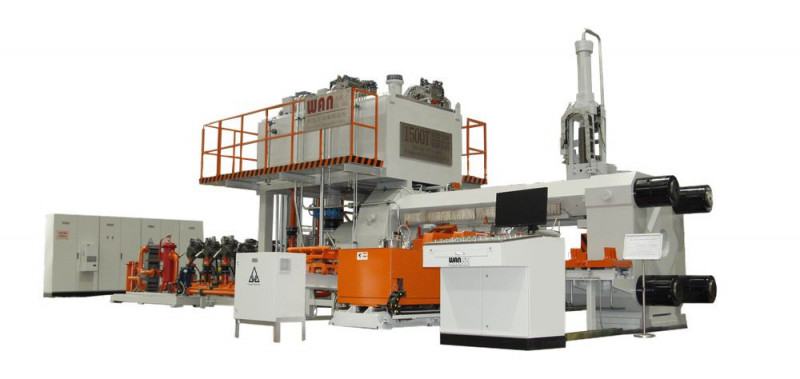Aluminum extrusion seems like a direct and automatic process. However, every stage has its complexity, depending on different parameters. Force is necessary for pushing a billet through the press container; it ensures easy flow of the workable aluminum alloy.
The force is exerted by the ram of the mechanical or hydraulic press and is relative to aspects like friction, surface ratio, die shape, speed, temperature, etc. Extruders use different extrusion methods, each of which has its force application demands; some methods like the indirect extrusion use less force as there is minimal friction. Let's dive into the force requirements of various aluminum extrusion methods.

Friction is a key determinant of the extrusion force; lubrication equals less friction hence reduced force. Aluminum extrusion force is a calculation (in Newtons or pounds) of the compressive buildup that pushes the metal alloy through the extruder’s die. Intricate aluminum alloys require application of a higher force.
Sometimes extruders need to determine the complexity of their process. There are different formulas and methods of calculating an accurate extrusion force. If you don't want to go through the hassle of doing the calculations, you can check out different extrusion force calculators available online. For this calculation, you will need the billet area, product area, extrusion constant, and of course, a formula (EF=A0∗k∗ln(A0/Af).
Aluminum extruders often use this method; it is the most straightforward of all the types. The softened aluminum alloy is fed into a heated container where the ram speed and pressure help it flow out the uniquely shaped die.
A component of the extruder machine known as a dummy block acts as a barrier between the softened aluminum alloy and the ram. Since the malleable billet moves towards the die, the movement creates friction on the container’s walls. Because of this, there is an increase in the extraction force applied.
Think of this method like a backward indirect extrusion. Some aluminum alloys are so complex that they are fed into the extruder machine from the die. A component of the extruder machine known as the stem is used to prevent movement as the billet pushes through the die. Because the softened alloy and the container are in the same motion, there is zero friction hence no extrusion force.
As the name implies, this is a process where the aluminum alloy is subjected to high temperatures to make it fully malleable. It is then fed into the extruder machine’s die. Since the billet is heated, it flows easily and there is no friction generated. These aspects reduce the amount of force used in the extrusion process.
Extruders use this method when they don't want to change the alloy properties or when working with aluminum alloys that can be oxidized. The process occurs at normal temperature hence greater force is applied.
This is an extrusion method that takes advantage of the die’s opening heat generating property during friction. The movement of the die and aluminum alloy generate friction which heats the billet allowing it to easily pass through the opening. More friction means higher extrusion force will be applied.
This is a unique and fast method where an extruder simply exerts a large force on the aluminum alloy which pushes it through a die, taking the desired shape. As mentioned, increased force is important here, as it allows for a precise design.
This type is just recently gaining popularity. It involves the production of tiny extrusions which are used for a limited number of applications. The larger the billet, the greater the extrusion force applied, therefore the force required for this method is less than others.
The differentiating factor of the extrusion methods mentioned is the movement between the softened aluminum alloy and the extruder’s container. The force used is determined by whether or not there is friction produced from this contact. The simple answer to this question is all the methods where the friction is not produced need less extrusion force, an example is the indirect extrusion.
The starting ram speed during aluminum extrusion is often higher and decreases with rise in extrusion temperature. The rate at which the billets flow out of the die and the ram speed determine the strain resistance and hence the extrusion force. High extrusion speed equals increased extrusion force.
In the extrusion process, achieving a reduced deformation resistance is crucial. This term refers to how an aluminum alloy resists the pressure buildup in the extruder container. A less deformation resistance allows easy flow of the softened aluminum on the same note, reducing the extrusion force. Increase in extrusion temperature helps with easy molding of the desired extrusion shapes. Nevertheless, extruders need to control the temperature by regulating ram speed to avoid sub-melting. Aspects of extrusion temperature control are:
● The initial aluminum alloy temperature
● Die flow friction starting billet temperature
● Aluminum deformation
● Aluminum alloy and extruder container friction
● Friction of the softened aluminum flow through the die
● Conduction and convection temperature
Some aluminum extrusion applications demand intricate shapes and dimensions. Certainly, the extrusion process of these designs is more complex than that of the standard alloys. They have a higher deformation resistance which increases the extrusion force.
Different extrusion methods have some unique process demands. Direct aluminum extrusion
Requires a higher extrusion force compared to indirect aluminum extrusion.
The extrusion die angle determines the flow of the softened aluminum alloy. Extruders can use different die angles based on the process requirements. They can use a high or low die angle. The die angle is proportional to the friction produced as the billet flows in the container, while the friction rate affects the extrusion force. Greater force is required to push the malleable billet through complex die shapes.
The degree of deformation is another significant aspect of the extrusion force. A higher extrusion ratio means that greater extrusion force will be applied.
● Increase Extrusion Temperature - While the billet is fed into the extruder machine, it is normally hard in nature. Heating is important as it softens the aluminum alloy so it can flow freely to the die. The harder the billet, the greater the extrusion friction and force used. Extruders can increase the temperature during the extrusion process to allow for an easy process and precise design. It also prevents roughness on the container caused by unmelted billet particles.
● Lubrication - The extruder machine is the heart of the aluminum extrusion process. However, there are other important additions like the lubrication. Before all else, it is paramount for an extended life of extruder equipment. It is also applied to ensure the softened aluminum flows easily and is an efficient way to reduce the extrusion force. Extruders should choose a lubricant suitable for the aluminum alloy, and other aspects of the process like temperature.
● Balance The Die Angle - Whether the design demands a high or low die angle, extruders should ensure it is well balanced. This can be done by inspecting the extruder machine for any blockages, as well as cleaning the screws and screens. Blockages can affect the die angle leading to higher extrusion force.
● Control The Extrusion Speed - Increasing the extrusion temperature calls for ram speed regulation. Otherwise, everything will be cranked up and there will be issues like unmelted particles, or a sticking billet which can increase the force used during the process.
● Choose Quality Aluminum Alloys - A quality aluminum billet provides the required hardness for the extrusion process which allows for uniform melting and easy flow. A low-grade aluminum alloy will equally lead to end products with compromised quality.
Reducing the extrusion force can have a significant impact on the production cost especially in high production rate applications. The extruder machine consumes less energy, and its life span is increased. Also, the easy flow of the softened aluminum prevents screw and screen blockages leading to improved extrusion efficiency.
High extrusion force and speed can cause uneven melting which in turn leads to billet particle residues in the container. They can lead to roughness and increased friction. Reduced extrusion force ensures the process is free flowing leading to precise final products.
The malleable billet is delicate and can be damaged by various process defects. Increased speed and force can cause damages like shape out and tearing. Extruders might end up repeating the process with replacement billets, hence waste metal. Using reduced force allows for precise parts and a cost-effective extrusion process.
Precise designs are essential in the extrusion business. This way, extruders can meet their customer’s unique demands. Reduced extrusion force is concurrent to a reduced deformation resistance. It eliminates the occurrence of some extrusion problems that can be caused by high ram speed, guaranteeing quality end products with the desired dimension and design.
Extrusion equipment is expensive and therefore extruders should properly maintain and use it. This ensures the machine meets the required span of service. The durability of the extrusion machine is affected by some aspects of the process like ram speed, force, and deformation resistance. These aspects can cause damage to components of the extruder like the container and die. Reduced extrusion force allows for an efficient extrusion process and improved equipment life.
The overall design of an extruded product, the shape, size and quality are determined by the die design. A die land is the exit section of the die where the flow channel profile is constant. Some extrusion issues can be caused by die land length variations. Reduced extrusion force allows for a low die land length. Some die design considerations an extruder can make are:
● 4 mm maximum die land wall thickness
● Uniform die land wall thickness
● Thicker exterior walls, and thinner interior walls
● Less use of hollow die land sections
The extrusion pressure is the buildup inside the extruder machine’s container. The container can withstand an intense pressure range of 1,000 - 5, 000 psi. Ensure you check the pressure limitations of an extruder machine as exceeding the required pressure range can cause damage to some components of the machine.
The key difference between the force and pressure of an extrusion pressure is that force is the buildup required to push the aluminum alloy through the container, while pressure is the buildup inside the container, which allows a good flow rate of the malleable billet.
Extruder machines are designed with some components like a shear pin which regulate the amount of pressure. They work by getting rid of the excess pressure during the process. The size of the die opening determines the pressure application, while more buildup is required to push the billet through small die holes. Additionally, the type of aluminum alloy determines the amount of pressure applied.
The extrusion force requirements vary depending on the aluminum alloys an extruder is working with. For instance, high-rate production applications require more complex and expensive equipment. Basically, the hydraulic press tonnage equals the extrusion pressure. There are many tonnage options ranging from 500t to 2500t and beyond. Intricate shapes and industrial productions call for a press of higher tonnage. There are different types of presses.
All you have to do is choose the one that best suits your production demands. The extrusion press can play a vital role in ensuring quality and precise designs so ensure you choose a reliable extrusion equipment supplier.
The right extrusion force is a contributing factor to an efficient extrusion process. In turn, an efficient extrusion process is the key to a successful aluminum extrusion business. The matter of the right amount of force is relative to varying process requirements. Nevertheless, you can look out for features like variable speed drivers and advanced motors in extruder machines for optimum efficiency.
Extruders should avoid the use of increased force for small billets as it leads to wasted energy and increased production cost. At Wangeshi, we provide optimum quality and energy efficient equipment for your aluminum extrusion business. Contact us today for a prompt quote!


